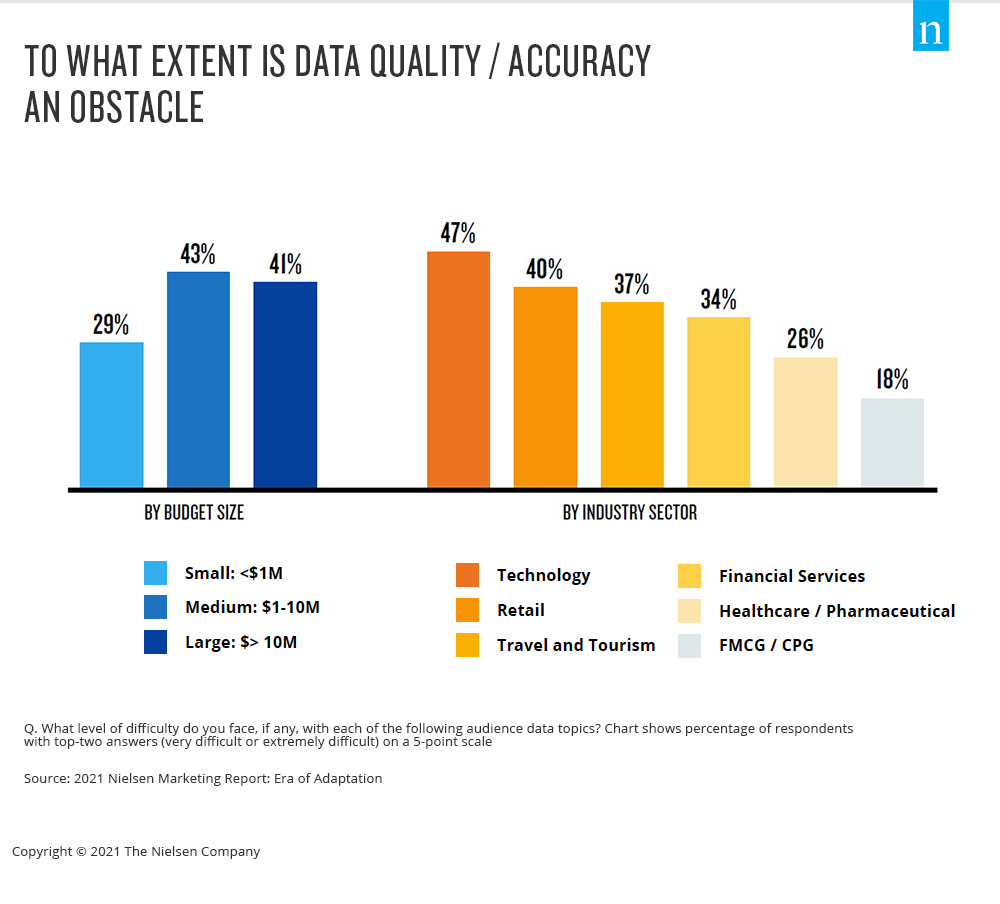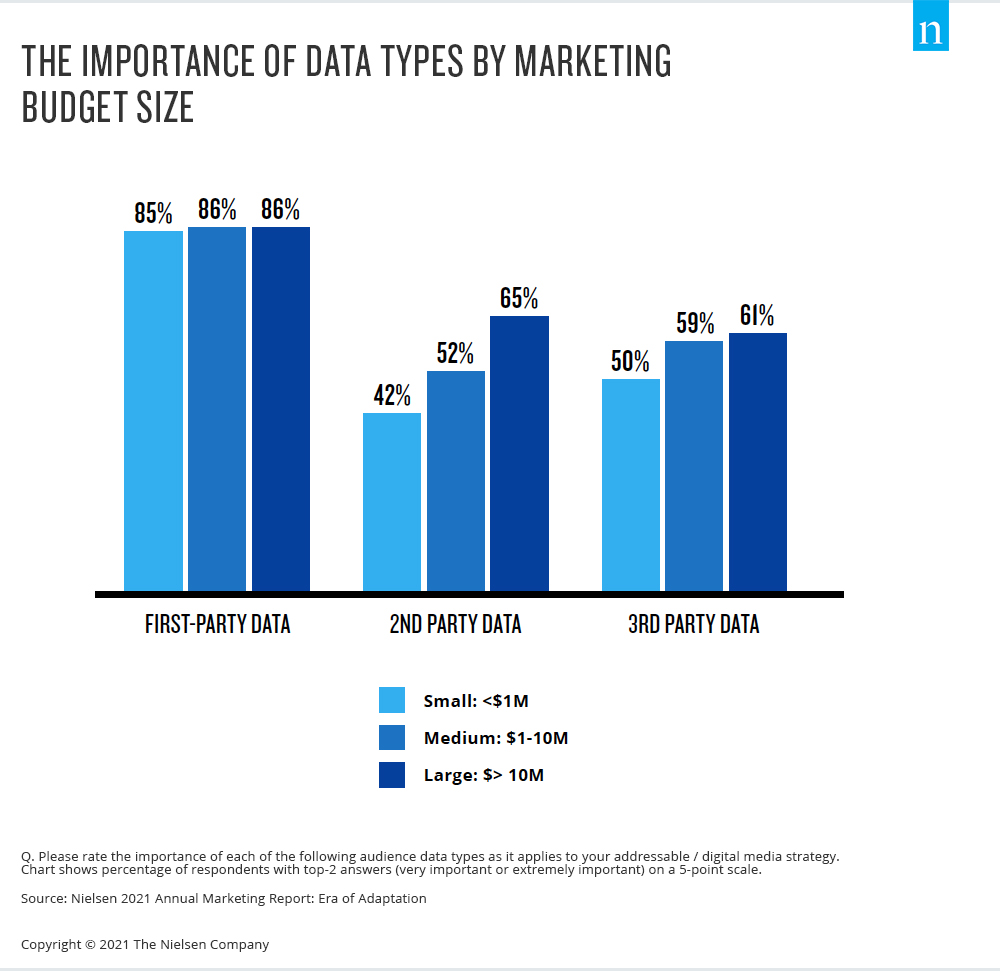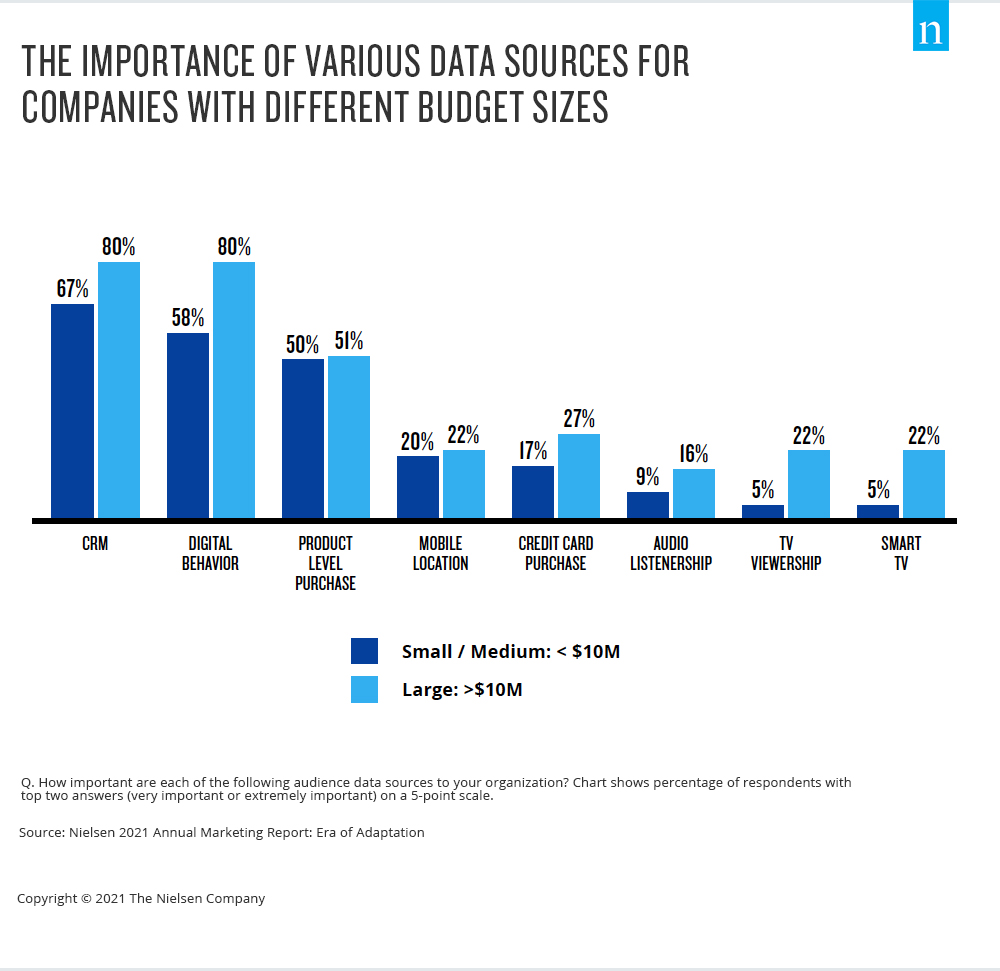No marketer would ever question the need for high-quality data, especially as consumers demand increasingly personalized experiences from brands. Despite the need, however, data quality remains a significant obstacle for brands of all sizes, which means many marketers will struggle to establish the relevant connections that consumers are seeking.
First-party data is the lifeblood of any brand’s marketing efforts, and 86% of the marketers surveyed for this year’s Nielsen Annual Marketing Report recognize its importance. Despite the acknowledgement, however, overall confidence in data quality is universally low. For example, 41% of the marketers at large companies (defined in the report as organizations with marketing budgets of more than $10 million) view data accuracy as a challenge. But they’re not alone.

Data is the key to developing the personalized experiences consumers are seeking, yet first-party data typically highlights brand-specific interactions. So in that regard, first-party data does not provide information about consumer behavior away from any given brand. Second- and third-party data provide brands with information about what consumers do when they’re not directly engaging with the brand. For true omnichannel marketing efforts, marketers need information beyond direct brand engagement. Surprisingly, especially when customer acquisition is a top priority for marketers this year, brands have yet to embrace data partnerships as a way to enrich their own first-party data.

Importantly, data is available from myriad sources. And as connectivity and digital interactions increase, new sources will continue coming online. Somewhat surprisingly, brands of all sizes are primarily focused on data sources that highlight an action at the end of a customer journey, such as an actual purchase, credit card charge or an interaction with a web page. As marketers begin focusing on the entire consumer journey rather than just an end point, multi-touch attribution solutions will become critical in identifying all touch points rather than just the last one.

Now that the world has more than 12 months of pandemic learning in hand, businesses should continue collecting data to know how to engage with consumers amid continuing disruption and change. And as data erosion continues, data partnerships should be a top priority. Data and person-level engagement are the keys to marketing success going forward, and many tools and solutions have been scaled to benefit brands and budgets of all sizes.
For additional insights, download the 2021 Nielsen Marketing Report: Era of Adaptation.



